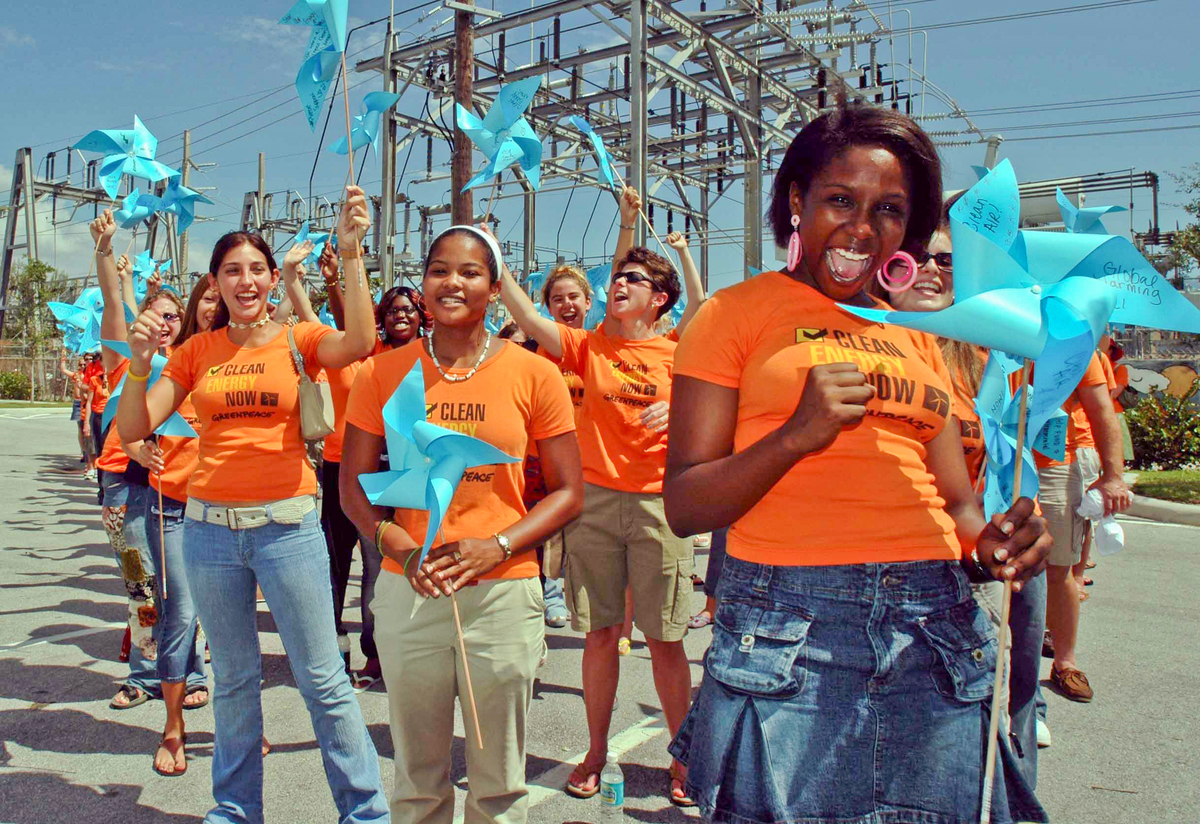Our Story
In 1971, motivated by their vision for a more green and peaceful world, a crew of twelve planned to set sail from Vancouver, British Columbia, in an old fishing boat. These activists believed a few individuals could make a difference. Their mission? To ‘bear witness’ to the US testing nuclear bombs off Amchitka island, Alaska, and prevent the test going ahead.

To raise money for the mission, Joni Mitchell, Phil Ochs and James Taylor played a benefit concert that 16,000 people attended at Vancouver’s Pacific Coliseum. Heartened by the support, the crew decided to name the old fishing boat. When the words “Green Peace” didn’t fit onto buttons, they were simply merged: Green Peace became Greenpeace.
The vessel never made it to Amchitka, and the bomb test went ahead, but it would be America’s last in the area. The trip had successfully turned public opinion, and Greenpeace’s mission had captured the hearts and minds of people across Canada. In the coming months, this same vision would spread across the globe, and a movement would be born.
Today, Greenpeace is the world’s most visible environmental organization, with offices in more than 55 countries and millions of financial supporters worldwide. Amchitka, it has turned out, was only the beginning of what would come to be a much bigger story.
Here are just a few of Greenpeace’s successes since 1971:
1972: After the first Greenpeace action in 1971, the U.S. abandons nuclear testing grounds at Amchitka Island, Alaska.
1982: After at sea actions against industrial whalers, a whaling moratorium is adopted by the International Whaling Commission
1991: After lobbying by Greenpeace and other organizations, the 39 Antarctic Treaty signatories agree to a 50-year ban of mineral exploitation on the continent.
2011: After the release of Greenpeace’s Dirty Laundry report, major clothing brands commit to eliminate discharges of hazardous chemicals from across their entire supply chains and products within 10 years.
2016: After decades of campaign work, 85% of the forested area of the Great Bear Rainforest in B.C. is protected from industrial logging.
2016: After three years of tireless legal action, Clyde River Inuit – with the support of Greenpeace Canada – stopped seismic blasting – a dangerous oil exploration project that threatens the Canadian Arctic.
2017: After more than five years of campaigning by Greenpeace, community groups, allies and environmental organizations, TransCanada cancels the Energy East tar sands pipeline.
For many more, view the interactive timeline of Greenpeace’s history, victories and successes.
